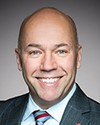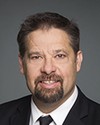Yes, I would agree with you. I think one of the major issues I have is that I have gone up to Sioux Lookout a couple of times for trips and have seen adolescents being flown out of the communities from the Sioux Lookout zone to come to see me in a clinic. Some of them have never been seen by a psychiatrist before, or if they have, they have not been reassessed for the last two to four years. They are grossly underserved compared to someone, for example, whom I now see at CAMH on a weekly basis, or even on a monthly basis. There are people who were started on medications years ago and their dosage has never been adjusted—or even changed if it's not effective. That's a huge frustration.
When I was talking about the lack of mental health resources, we have some psychiatrists in the country who are willing to provide services to these communities, and they should be congratulated, but we need so many more. We can also take advantage of technology, like telepsychiatry. I used to work in telepsychiatry at the Centre for Addiction and Mental Health. It's a big commitment for a psychiatrist to travel regularly up to a community, but there are some who do.
I think psychiatry programs—this is maybe another national initiative—really need to look at having a separate stream, perhaps similar to specializing in child and adolescent psychiatry, or similar to being a geriatric psychiatrist, or of being a remote or rural psychiatrist, or even an aboriginal stream of training people to work in communities and to travel to these communities if possible. I recognize the difficulty. I've done it myself. I used to be a fly-in psychiatrist. It takes a terrible toll on you personally and on your family. However, I'll say strongly that it is shameful the level of care that people receive in our communities, by and large.





